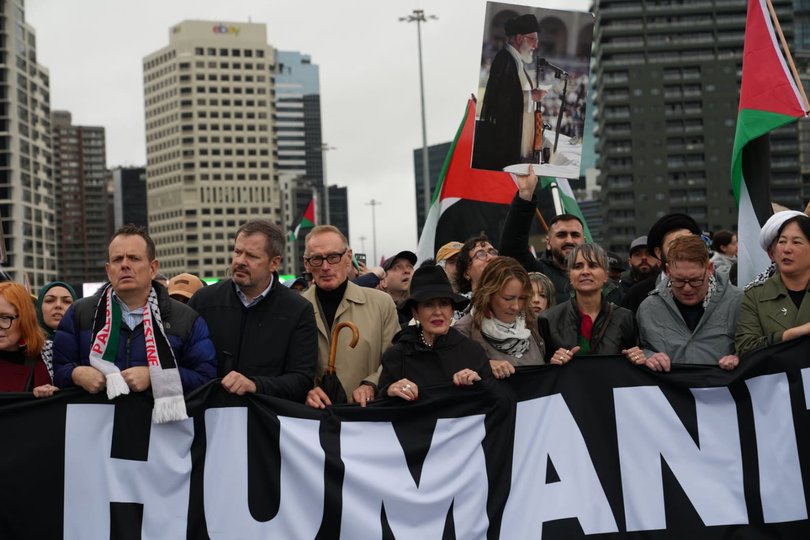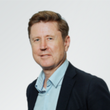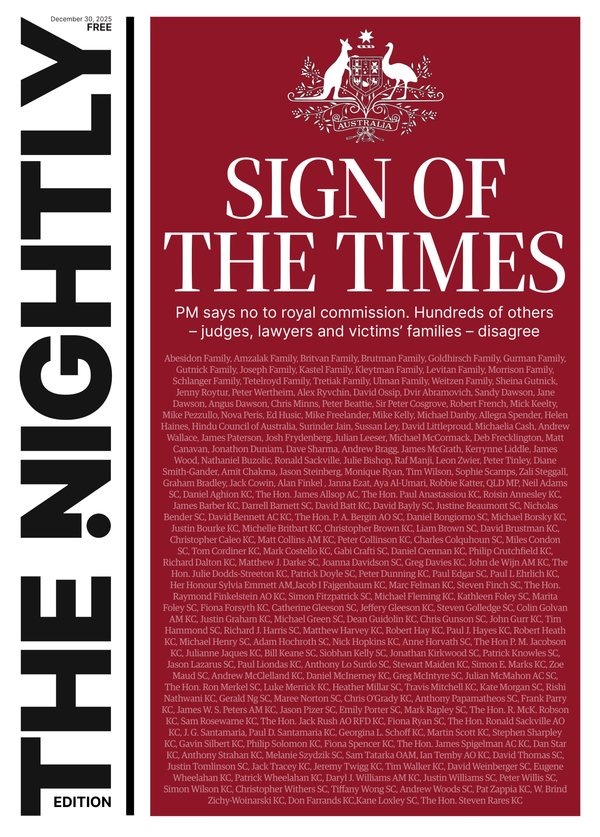AARON PATRICK: Sydney, I hate to say this, but you suck

The moment I finally became fed up with the mayor of the great city I have chosen to call home was when a colleague pointed to a photograph of Clover Moore, in what looked like a witch’s hat, marching across Sydney Harbour Bridge at the front of Sunday’s protest with other celebrity opponents of the Hamas-Israel war.
In an effort to understand the genesis of the 90,000-strong march, I had been researching organiser Josh Lees. It quickly became clear Mr Lees is an old-school Marxist who had used his considerable organisational skills, honed through decades of far-left activism, to seize up the main arterial route into the centre of Australia’s biggest city for the best part of a day.
I don’t begrudge Mr Lees’ activism, much as I oppose his political beliefs. Ms Moore, though, has a greater responsibility to the city she has overseen as mayor for 21 years and a councillor for 45.
Sign up to The Nightly's newsletters.
Get the first look at the digital newspaper, curated daily stories and breaking headlines delivered to your inbox.
By continuing you agree to our Terms and Privacy Policy.I would happily forgive her Middle East virtue signalling if the city was in great shape. It’s not. Put simply, Sydney is going backwards. The traffic congestion is terrible, housing is prohibitively expensive, crime feels rampant, the night life is poor and public transport unreliable.
Despite huge natural advantages, including plentiful beaches and a pleasant, sub-tropical climate, Sydney is the Australian city residents dislike the most. The latest data shows 41,086 people left in the 2023-24 financial year, many of them young men and women who gave up hope on building lives in their birthplace.
No other city loses as many people each year. Heavily governed Melbourne lost 7,581 residents in the same year. Brisbane and Perth attracted significant numbers of people from other parts of Australia. Adelaide, Hobart, Darwin and Canberra suffered modest falls. (Updated figures won’t be available for eight months. It would be a miracle if the trend reversed.)

Woke power
Ms Moore is not responsible for all of Sydney’s problems. Investment in the metropolitan train network, for example, has been strangled by pay-rise demands from a union-dominated workforce that regularly holds the city to ransom.
But atop Sydney’s most influential municipality, Ms Moore has built a centre of woke power in a city of 5.5 million that voting patterns demonstrate is consistently centrist. Instead of focusing on difficult policy work to alleviate Sydney’s serious housing, transport and crime challenges, the city administration concentrates on largely symbolic programs skewed to the mayor’s political constituencies.
In recent weeks it has promoted a program that, while small, is a good example of its priorities, which include subsidising rent for 100 organisations and individuals across 35 properties.
The council is looking for artists to rent two three-bedroom apartments in Darlinghurst and Ultimo for $200 a week, a sum unimaginably small in suburbs where anything under $1000 a week is barely habitable.
As an author of non-fiction books, I wondered if I might be eligible for the cut-price accommodation. I figure it could be a good moment to encourage my two adult children to find their own homes.
I watched an an online briefing given by a council employee who felt the need to disclose her ethnicity up front: Lebanese, Irish and Spanish, although her mother arrived in Australia in the 1950s. A second council worker explained the application process.
I’m not deaf. If I was, it would have been OK. Two Auslan interpreters staffed the 38-minute presentation.
Digging the DJ
The vague selection criteria does not include professional success, or the reasonable prospect of it. “We don’t want to be prescriptive about the kind of impact you have,” the program director said on the briefing. “We’re just prioritising artists and creatives who are connected to and enhance the local community through their creative practice.”
The recent recipients, according to the council, were a queer comedian, a deaf painter, a Brazilian dancer, an Indigenous playwright and a Samoan DJ. No doubt each was worthy of support on a personal level, but council taxpayers might ask why they should subsidise the lives of what look like fringe acts.
Ms Moore argues, by helping artists live and work in our city, she enriches Sydney. I don’t know if inner Sydney suffers from a Samoan DJ shortage (another council program offers free help learning the trade), but there is another way to attract creative workers to the city: build more homes.
In a city where housing has been ranked the second most expensive in the world, compared to income, Ms Moore’s council should make it easier to build apartment buildings, which would put downward pressure on rents.
Under state-wide targets, the council was meant to approve 3,780 homes in 2024. It approved 456, one of the worst results in greater Sydney, according to the Sydney Yimby, a pro-housing pressure group.
There are other problems. On Wednesday morning traffic across Sydney averaged speeds of 21km/h while the congestion level was 71 per cent, according to TomTom, a mapping company. A part of the problem are bike lanes Ms Moore built traversing the city.
As a cyclist I love them. They have their own traffic lights. Sometimes I even pass other riders.
I suspect Mr Lees likes them too.

